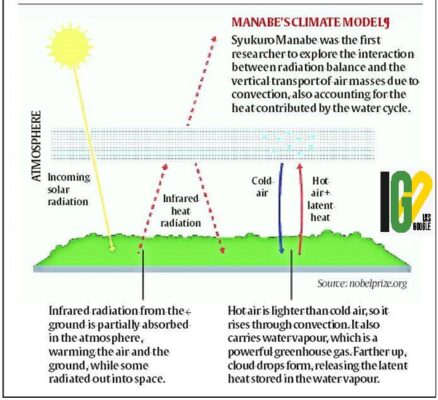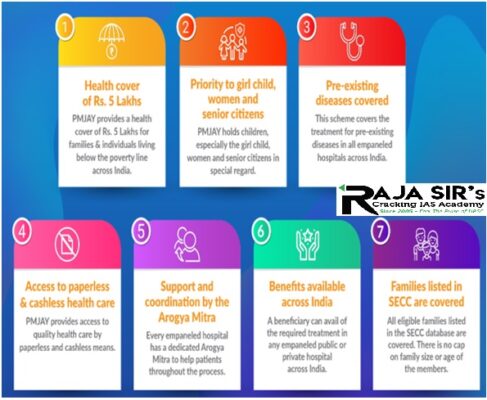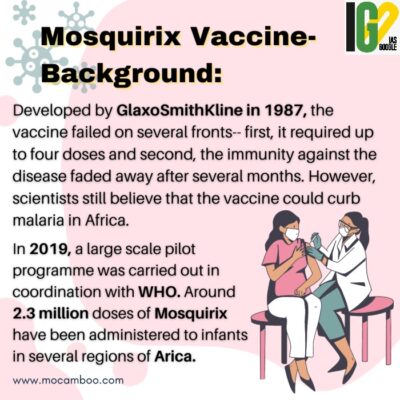- Home
- Prelims
- Mains
- Current Affairs
- Study Materials
- Test Series
08th Oct 2021
NOBEL PHYSICS PRIZE GOES TO 3 FOR CLIMATE DISCOVERIES
The winners of Nobel Prize for physics has been awarded to scientists from Japan, Germany and Italy on October 5 by Goran Hansson, secretary-general of the Royal Swedish Academy of Sciences.



HEALTH BENEFIT PACKAGE UNDER AYUSHMAN BHARAT REVISED
The National Health Authority (NHA) has revised the Health Benefit Package (HBP) Master under the Ayushman Bharat Pradhan Mantri Jan Arogya Yojana (AB PM-JAY).



- The Nobel Committee also awarded the prize in physiology or medicine to Americans David Julius and Ardem Patapoutian for their discoveries into how the human body perceives temperature and touch.
- Syukuro Manabe (90) and Klaus Hasselmann (89) were cited for their work in “the physical modelling of Earth’s climate, quantifying variability and reliably predicting global warming”.
- The second half of the prize was awarded to Giorgio Parisi (73) for “the discovery of the interplay of disorder and fluctuations in physical systems from atomic to planetary scales.”
- The prestigious award comes with a gold medal and 10 million Swedish kronor (over $1.14 million).
- The prize money comes from a bequest left by the prize’s creator, Swedish inventor Alfred Nobel, who died in 1895.
- In 2020, the prize went to American Andrea Ghez, Roger Penrose of Britain and Reinhard Genzel of Germany for their research into black holes.
- Over the coming days prizes will also be awarded for outstanding work in the fields of chemistry, literature, peace and economics.
- Aim: To aid Seychelles in strengthening tax administration by transferring technical skills to tax auditors through sharing of audit practices.
- Duration: 12 months
- The focus will be on ‘Transfer Pricing’ cases of tourism and financial services sectors.
- India was the Partner Administration for the Programme.
- It was the sixth TIWB programme which India has supported by providing Tax Expert.
- A dedicated central unit managed by OECD and UNDP operates as a clearing house to match the demand for auditing assistance.
- It will evaluate the revenue increases which can be attributed to TIWB capacity-building support.
- Tax audit experts work alongside local officials of developing countries on tax audit and related issues.
- Initial phase will be accompanied by a resource mobilisation drive.
- Later phases will be supported by contributions from beneficiary governments, allocating a portion of revenue to support other countries to benefit.
- The exercise will see the participation of all Quad countries with the U.S. being invited for the first time.
- Exercise Milan began in 1995, is held biennially and brings together Navies of all the countries in the region.
- It has so far been held at Port Blair but is now being shifted to Visakhapatnam which offers more space and infrastructure.
- The invitees include all Indian Ocean littoral states and countries from South East Asia among others.

- The amendment is proposed by the Ministry of Environment, Forests and Climate Change (MoEFCC).
- According to the proposal, the deemed forests listed by state governments up to 1996 will continue to be considered forest land.
- The plantations carried out along roads have been removed from the category of deemed forests.
- It proposes to exempt certain categories of infrastructure project developers from approaching the Centre for permission to use forest land for non-forestry purposes.
- The projects include- national security projects, border infrastructure projects, land owned by the Railways or the Road Transport Ministry, acquired before 1980.
- It will also place strict norms for forest conservation by increasing penal provisions for offenses and maintaining “pristine forests” where no non-forestry activity will be allowed under any circumstances.
- The Forest (Conservation) Act, 1980, came into force to address deforestation.
- The Indian Forest Act 1927 allowed the colonial British administration to control the extraction of timber, and did not aim at preserving forests or addressing deforestation.
- The FCA made it mandatory to get the Centre Government’s permission for using forest land for “non forestry purposes”.
- An advisory committee was created to recommend such re-classification.
- There were two major amendments to the FCA — in 1988 and 1996.
- The scope of the existing definition of 'non-forest purposes' expanded so as to include cultivation of tea, coffee, spices, rubber, palms, oil-bearing plants, horticultural crops, and medicinal plants.
- Till 1996, the forest land was only ‘the land defined by the Indian Forest Act 1927’.
- In this case, the Supreme Court judgement included all areas which are recorded as ‘forest’ in any government record, irrespective of ownership, recognition and classification.
- The constituents of “forest” were widely expanded following the judgment. Now, the “forest” also included:
- All areas recorded as “forest” in any government record, irrespective of ownership, recognition and classification
- All areas that conformed to the “dictionary” meaning of “forest”.
- All areas which are identified as “forest” by an expert committee constituted by the Supreme Court following the 1996 order.
- This judgment paved the way for:
- Calculating the net present value, or economic value of the portion of forest being cut for development work, which was to be paid by project proponents.
- Creation of a compensatory afforestation fund.
- Providing non-forestry land in lieu of the diverted forest.
- Identification of forest land is subjective and arbitrary to some extent. Considering any private area as forest would restrict the right of an individual to use his/her own land for any non-forestry activity.
- Ex: The Ministries of Railways & Road transport cannot use the land they own without the permission from the MoEFCC. These permissions can take anywhere between 2-4 years, causing delays.
- Central Government is committed to a principle of increasing forest cover, and this makes it harder to access land for infrastructure projects by States and private entities.
- India’s aim is to have at least 33% of India’s geographical area under forest and tree cover. The forest cover is around 22%, at present.
- With more land coming under the definition of “forest”, it becomes harder for State Governments or private industry to use land that falls under the definition of “forest” for non-forestry purposes. This has given rise to multiple instances of litigation, and questions on the legal definition of “forest”.
- The amendment would reduce the flow of foreign exchange for import of wood and wood derivatives of around Rs 45,000 crores, by encouraging plantations and afforestation.
- The amendment would remove the earlier impediments & encouraging private landowners to grow more trees.
- India aims to create a carbon sink to lock in 2.5 to 3 billion tonnes of CO2 by 2030. This can be achieved only through planting trees on private land.

- The Mega parks scheme will include brownfield and greenfield projects, spread over five years.
- The parks would comprise four categories — units investing ₹300 crore or more, units investing ₹100-300 crore, investors of less than ₹100 crore and tenant units.
- As many as 10 States including Tamil Nadu, Telangana and Gujarat have shown interest for the parks.
- The states offering the cheapest land (contiguous and encumbrance-free land of minimum 1,000 acres) and facilities such as adequate electricity and water would be selected through a transparent challenge route.
- The SPV would select a Master Developer to set up and maintain the park for a specified period.
- Of the park’s area, 50% would be earmarked for manufacturing activity, 20% for utilities, and 10% set aside for commercial development.
- It will work in tandem with the production-linked incentive scheme (PLI) in the textiles sector.
- To create world-class infrastructure with plug-and-play facilities that enable major investments in exports.
- To give domestic manufacturers a level-playing field in the international textiles market & pave the way for India to become a global champion of textiles exports.
- To enable the textile industry to become globally competitive and boost employment generation, investment and exports.
- Parks to be developed by a Special Purpose Vehicle (SPV) owned by the Central and State governments.
- Development Capital Support aimed at helping develop infrastructure will fund 30% of the project cost with a cap of ₹500 crore for greenfield projects and ₹200 crore for brownfield projects.
- A separate Competitiveness Incentive Support limited to ₹300 crore per park.
- Core Infrastructure: Incubation Centre & Plug & Play facility, Developed Factory Sites, Roads, Power, Water and Waste Water system, Common Processing House & CETP and other related facilities e.g., Design Centre, Testing Centres etc.
- Support Infrastructure: Workers’ hostels & housing, logistics park, warehousing, medical, training & skill development facilities.
- The parks are expected to generate 7 lakh direct jobs and provide indirect jobs to almost 14 lakh people.
| Brownfield Project | Greenfield Project | ||
|
|
- NHA is the apex body for implementing AB PM-JAY.

- The revised the Health Benefit Package (HBP) or HBP 2.2 is expected to be rolled out from November, 2021.
- In HBP 2.2, rates of some health packages have been increased by 20 percent to 400 per cent under PM-JAY.
- Around, 400 procedure rates have been revised and one new additional medical management package related to black fungus has also been added.
- NHA has undertaken rate revision in the following categories:
- Radiation oncology procedures
- Medical Management procedures like procedure for dengue, acute febrile illness
- Surgical package treatment for black fungus
- HBP 2.2 will strengthen the empanelled hospitals to provide better healthcare services to the beneficiaries under Ayushman Bharat PM-JAY.
- The revised packages for oncology will enhance cancer care for the beneficiaries in the country.
- PMJAY was launched on 23rd September, 2018 in Ranchi, Jharkhand.
- It is the largest health assurance scheme in the world.
- Aim:
- To provide a health cover of Rs. 5 lakhs per family per year for secondary and tertiary care hospitalization.
- To cover more than 10.74 crores poor and vulnerable families (over 50 crore Indian citizens) without any limitations pertaining to family size and age.
- The beneficiaries get an e-card that can be used to avail services at an empanelled hospital, public or private, anywhere in the country to obtain cashless treatment.
- The coverage includes 3 days of pre-hospitalisation and 15 days of post-hospitalisation expenses.
- It subsumed the then existing Rashtriya Swasthya Bima Yojana (RSBY) which had been launched in 2008.
- The households in PMJAY are included based on the deprivation and occupational criteria of Socio-Economic Caste Census 2011 (SECC 2011) for rural and urban areas respectively.

- This is the first malaria vaccine to have completed the clinical development process, and is approved by the European Medicines Agency (EMA).
- The pilot programme of this vaccine has been introduced by Ghana, Kenya, and Malawi national ministries of health through their childhood immunization programme.
- Developer: GlaxoSmithKline (GSK) company
- Working: The vaccine trains the immune system to attack the malaria parasite Plasmodium (P.) falciparum (the deadliest species of the malaria parasite) which is spread by mosquito bites.
- Efficacy:
- Able to prevent severe cases of malaria in only 30 per cent of the cases.
- Vaccine only prevents four in ten malarial cases and must be given as four injections over 18 months.
- Malaria is a life-threatening disease caused by parasites (Plasmodium) transmitted to people through the bites of infected female Anopheles mosquitoes.
- Most deaths are caused by P. falciparum, whereas P. vivax, P. ovale, and P. malariae generally cause a milder form of malaria.
- It is preventable and curable.
- Symptoms: Fever, tiredness, vomiting, and headaches.
- In severe cases, it can cause yellow skin, seizures, coma, or death.
- The disease is widespread in the tropical and subtropical regions around the equator.
- This includes much of sub-Saharan Africa, Asia, and Latin America.
- Annually, over 200 million cases of malaria are reported across the world and more than 400,000 people die of the disease.
- Half the global malaria-related deaths in 2019 were in six African countries:
- Nigeria (23 per cent)
- Democratic Republic of the Congo
- Tanzania
- Burkina Faso
- Mozambique
- Niger
- In accordance with Global Technical Strategy, Government of India has launched National Framework for Malaria Elimination 2016-2030 in February 2016 and the National Strategic Plan for Malaria Elimination 2017-2022 in July 2017 with WHO support.
- India has a vision of a malaria free country by 2027 and elimination by 2030.
- High Burden to High Impact (HBHI) strategy has been initiated in four high endemic states i.e., West Bengal, Jharkhand, Chhattisgarh and Madhya Pradesh in July 2019.
- India has made significant gains towards malaria control and eradication.
- In 2019, there were 6.8 million fewer cases than in 2016, and the number of cases per 1000 of the at-risk population fell from 10 to 4.3.
- According to World Malaria Report 2020, In India, the malaria infections fell by 14.4 million between 2000 and 2019 — the largest reduction in South-East Asia.
- In 2019, India accounted for about 86 per cent of all malaria deaths in the South-East Asia.
- E-2020 initiative- WHO identified 21 countries with the potential to achieve zero indigenous cases of malaria by 2020, spread across 5 regions.
- World Health Organisation has set 2030 as the global deadline to eradicate Malaria.









 Latest News
Latest News
 General Studies
General Studies